Drosera Capensis (Cap Sundew) Care & Growing Guide
Written by Ivy
Dec 08 2021
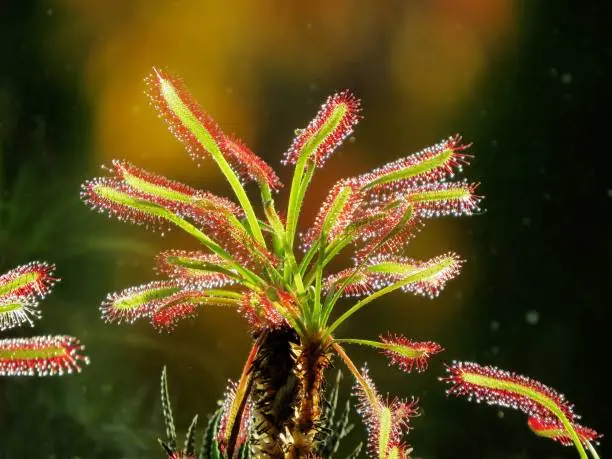
The Drosera Capensis is naturally discovered in South-Africa, especially the Cape area, which explains its common name Cap Sundew. Here, the Drosera Capensis grows in subtropical climates. It's additionally an invasive species in some different areas, such as New Zealand, the place it is prohibited. Drosera Capensis has developed to be pretty hardy and can stand up to a extensive vary of temperatures, which makes it a suitable choice for novices simply getting into carnivorous plant growing.
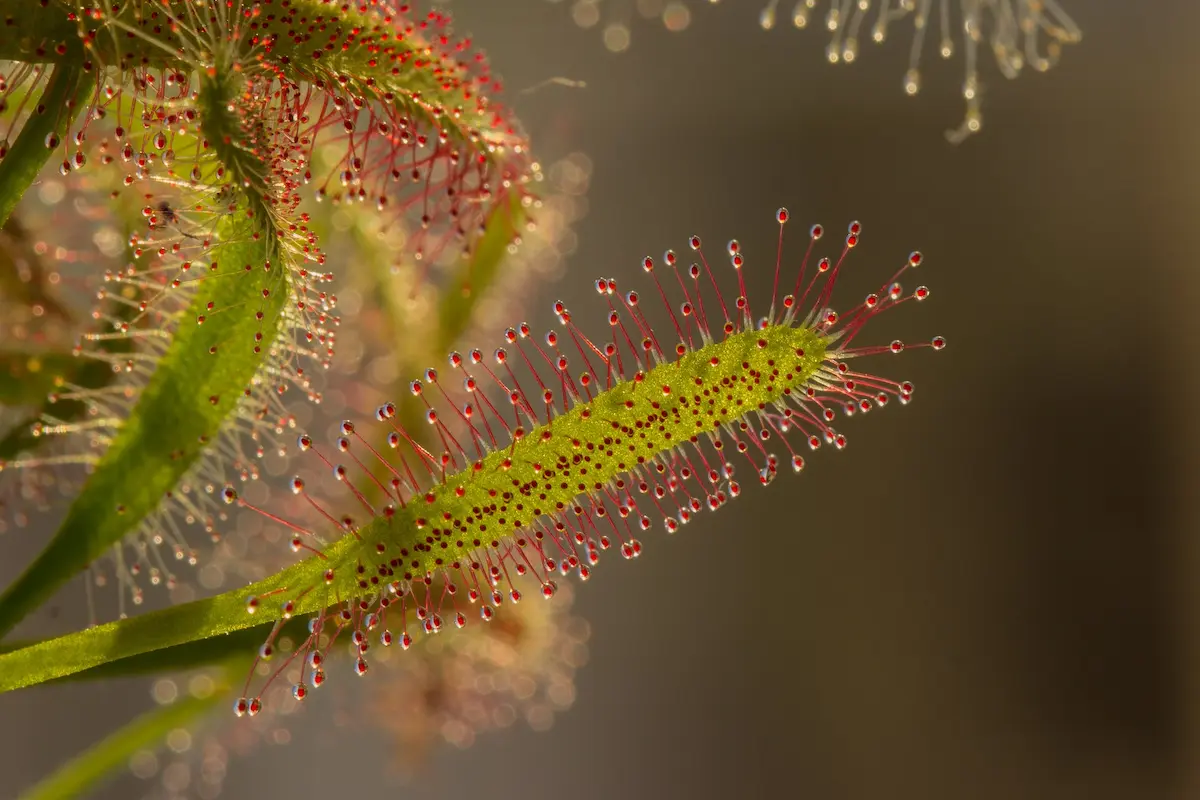
An vital note: keep away from the use of faucet water, as it can comprise salts and chlorine that ought to be dangerous to the Drosera Capensis; instead, use rainwater, purified water, or distilled water.
We ought to water it commonly each and every two days. A top advice would be to water to hire the water tray method, put the pot on a tray with approximately 2.5 centimeters ( 1 inch) of water to take in the water it needs.
Most Drosera Capensiss thrive in a typical soil for Drosera Capensis – moist soil that is negative in vitamins (often loos and fens). That is the purpose why they seize and feed on insects' juices to compensate for negative soil. But some Drosera Capensiss that stay in abandoned areas can continue to exist the warmth with the aid of solely developing with the rain.
If you have a brightly lit greenhouse barring a good deal whitewash on it, you have to be fantastic if you can grant 10-16 hours of sunlight. If you are fortunate adequate to stay in a local weather the place you can develop your Drosera Capensis outdoors, 10-16 hours of direct, unfiltered daylight is your prescription, too.
But what about the indoor grower? This poses a foremost challenge. It is not likely that you will have a room that receives sufficient vivid sunlight, so you will want to grant synthetic lighting. And you ought to furnish a lot of it! Light filtering thru a window is now not enough, except perhaps we're speakme about an atrium which is so vibrant you blink for a few minutes each time you enter it.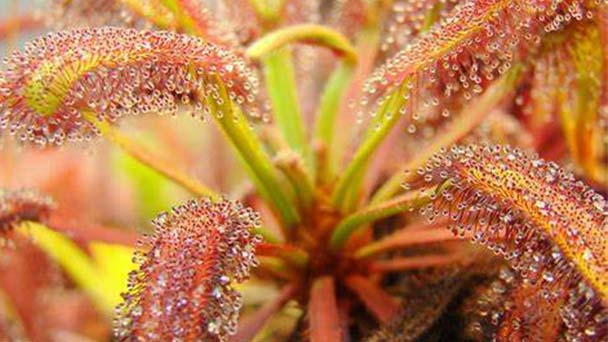
Light is perhaps the single most vital component in dew production. If a Drosera Capensis does now not get hold of adequate light, it will show up definitely inexperienced and the tentacles will now not have crimson coloration (normally the tentacles will flip crimson or pink in shiny light). The dew all through this time will commonly solely be produced in excessive humidity, and will be in the main water (without the sticky substance). If given greater sunlight, Drosera Capensiss have the strength they want to produce a thicker mucilage that is greater succesful of protecting onto insects, and will now not totally evaporate in low humidity
Betta fish pellets are a bit greater of a process. Because they're greater dense than flakes, Drosera Capensis's mucilage can also now not spoil it all down and digest it. Lots of human beings combine pellets with water to destroy them down and make a gentle paste. Take a glob of this paste with a toothpick or your device of choice, and smear it onto a Drosera Capensis leaf.
Some growers who preserve live insect meals for reptiles additionally feed their Drosera Capensis with these. I do not advise shopping for stay bugs simply for feeding plants. You'll get way too many bugs and feed your vegetation so infrequently, most of them will in all likelihood die and turn out to be a nasty, pungent mess earlier than you can use all of them as food.
Drosera Capensis will devour if truth be told some thing that will stick to them except getting away. Essentially, if it will stick to Drosera Capensis, the Drosera Capensis can consume it. Generally speaking, you do not have to fear about the measurement of their meals as much.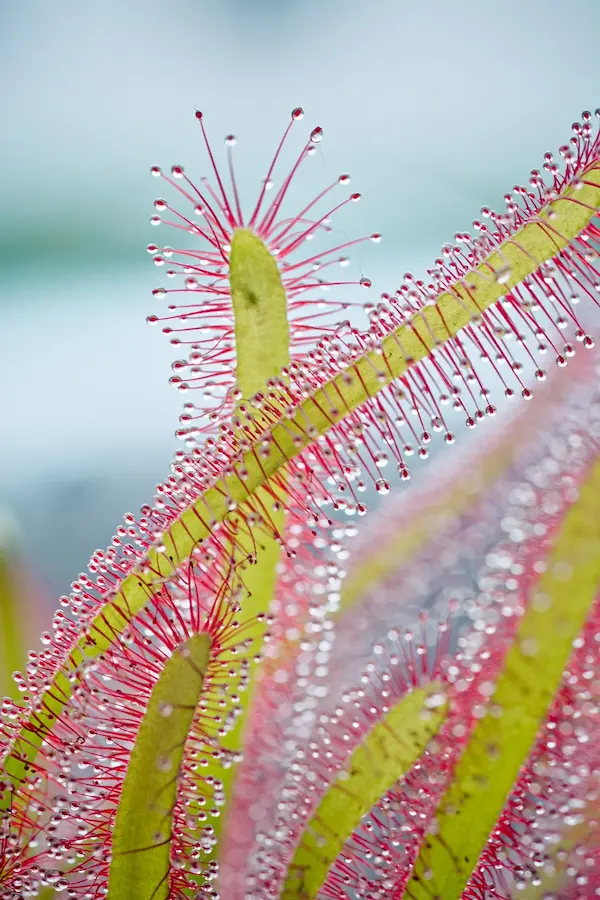
If you want to transplant your cape Drosera Capensis into a new container, you will want to buy a container that is large than what the plant had previously, principally if your plant has grown. If you do not choose to purchase a new container, you can usually disinfect the ancient container and use it again. However, solely re-use an historic container if the container is in true condition, and your cape Drosera Capensis plant hasn't grown much.
You may not want to trim leaves on your cape Drosera Capensis often, if at all. You additionally might not want to re-pot your plant very frequently except you are dealing with pests. Typically, re-potting your cape Drosera Capensis as soon as each and every three to 4 years ought to do the trick. It's additionally high-quality to transplant your cape Drosera Capensis when the plant is dormant so you might not journey as tons stress.
If you are dealing with pests and it is inflicting you to re-pot your flowers often, you may want to seem to be deeper into the problem. You do not favor to re-pot your cape Drosera Capensis too regularly due to the fact of the stress it motives on the plant. So, make positive you are re-potting solely when essential every time you journey pests or as soon as each and every three to 4 years.
Repotting a Drosera Capensis can be loads of fun, however there are a few matters to think about when doing so. If you discover your self struggling to correctly repot your Drosera Capensis, do now not supply up. Simply observe our recommendations for how to repot your Drosera Capensis, and you will be on your way to giving your Drosera Capensis a healthful developing environment.
Selecting the proper pot for your Drosera Capensis is very important. You do not prefer some thing too small, or you will discover your self repotting Drosera Capensis each six months, which isn't always correct for you or your plant.
A proper rule of thumb when repotting is to use a pot that is about two inches large than the modern-day or preceding pot. The pot must be at least 4-6 inches deep, relying on whether or not your range of Drosera Capensis has lengthy or brief roots.
Ideally, you need to keep away from clay pots when repotting your Drosera Capensis as they can put vitamins into the soil of the Drosera Capensis that can truly kill your Drosera Capensis eventually.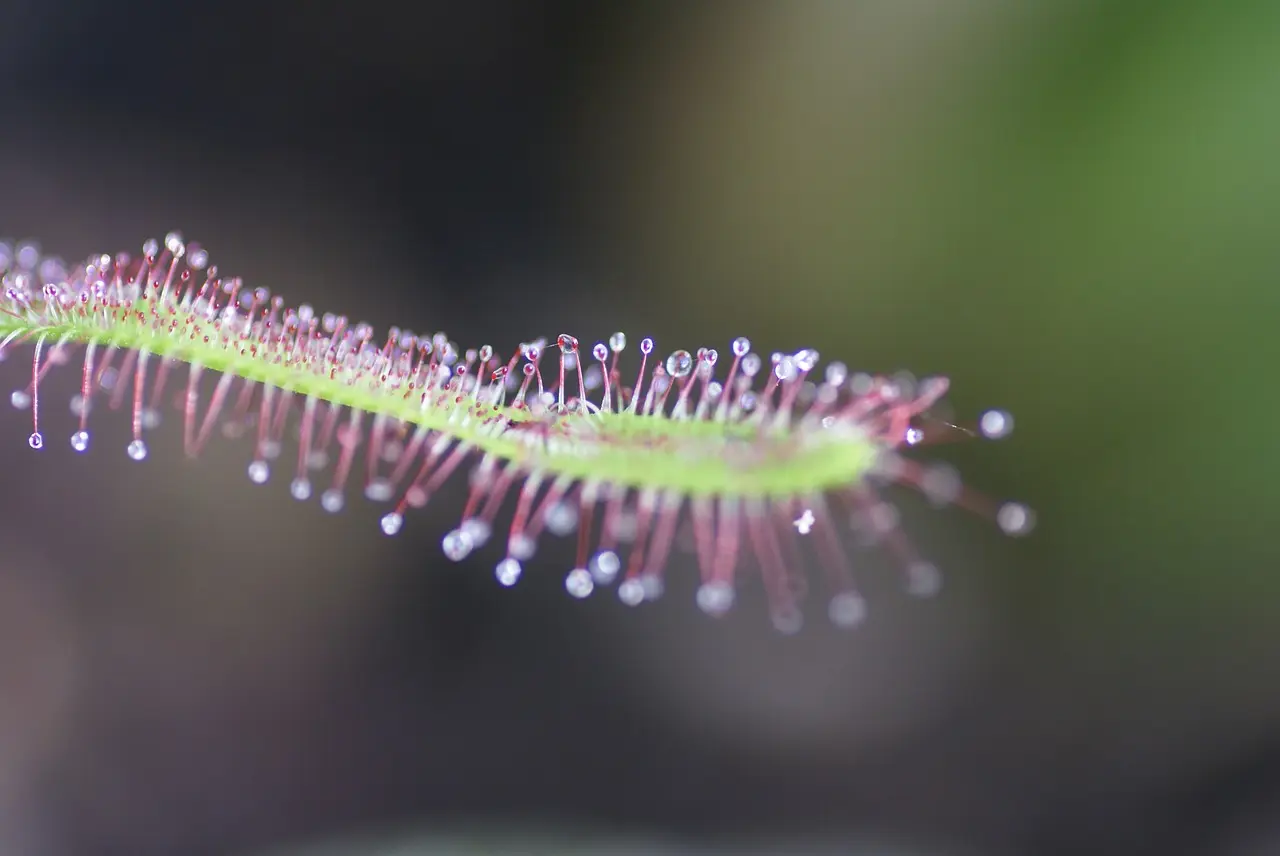
Sometimes you can't see any insects, however may additionally have tiny white sheddings of their skins, and a ailing searching plant. This will be aphids. A systemic insecticide is the first-class way to deal with them, or submerge the complete plant for a couple of days. Soft cleaning soap in every other natural approach of dealing with them.
We do have a native parasitic wasp, which we motivate in our polytunnels -it is regularly discovered on stinging nettles. Look for a parisitised aphid, which will seem to be like a light brown scale, It will hatch into a wasp. However, it is fine saved away from Butterworts and Drosera Capensiss, as they will trap them.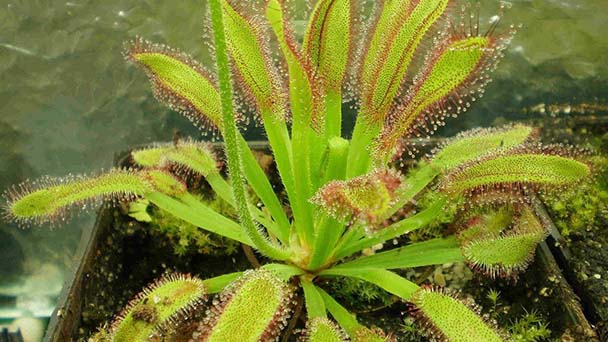
Why do leaf cuttings as a substitute of propagating flora from seed? Drosera capensis leaf cuttings will produce genuine clones of the mum or dad plant. There is a lot of genetic version that receives expressed in seedlings. You usually want to begin many extra vegetation than you choose from seed to guarantee you get a few that are energetic in your developing conditions. Leaf cuttings might also be your solely choice if you prefer an genuine reproduction of the prize plant that is already performing nicely for you or you desire to propagate a sterile hybrid or a plant that in any other case may not produce seed. As a bonus, leaf cuttings have a tendency to produce mature vegetation faster than from seed.
Not all Drosera species propagate comfortably from leaf cuttings. Drosera capensis leaf cuttings are mainly difficult. For this species and many others with thick ropey roots, root cuttings can work well.
It is impractical to make leaf cuttings of pigmy and tuberous Drosera due to the fact the leaves are skinny and have a tendency no longer to make sprouts. The pigmies are typically propagated from the gemmae they produce seasonally. The tuberous species are excellent completed via seed or sterile culture.
The Drosera petiolaris team species sprout new plant life from the base of the leaf the place it attaches to the stem. You want to pull off the Drosera capensis leaf taking the stipule with it. When you do this you are taking a danger of unfavorable your plant. But of these species this is the solely way to do it and even making ideal pullings is no assurance of getting new plants.
Place the root cuttings horizontally on the plant's desired soil mix, and cowl with 1/4 – half of inch of soil. It's fantastic to plant them in a propagation tray with a humidity dome, or use any other potential of retaining prerequisites humid and warm.
Even although the roots do not have leaves to photosynthesize yet, it is necessary to expose Drosera capensis to bright, oblique light, so region them beneath develop lights, in a sunny window, or outdoors. Make positive that the propagation tray stays out of direct sun, or you threat overheating and cooking your root cuttings.
Be patient, preserve the soil moist, and inside a few weeks, you may begin to observe wee plantlets sprouting from the soil. After a few leaves have emerged, take away the humidity dome from the seed trays, and region the flora in direct light. Give the Drosera capensis root structures a few months to set up themselves, and you can replant your Drosera into a greater everlasting home.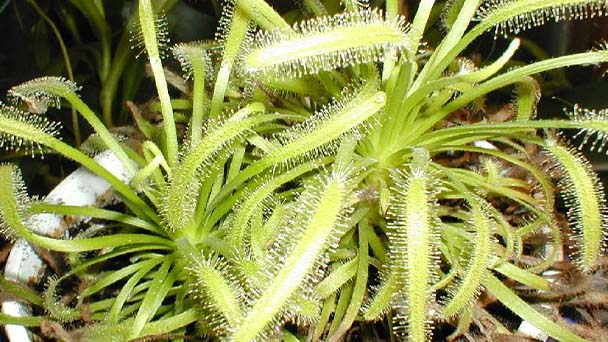
In a bit much less than two months, small flora emerged from leaf cuttings. First, Drosera capensis pushed out a couple of carnivorous leaves, and in a couple of weeks, first roots observed as well. By the use of saved power from the mom plant's leaf, they have a tendency to develop a whole lot quicker than vegetation propagated from seeds, which capability propagation of Drosera by using cuttings is way quicker and greater efficient, at least for Drosera capensis.
Generally plant life with self-incompatibility open their plants more than one days. Please see the web page on Drosera capensis pollen self-incompatibility for extra facts and a species list.
Some species of Drosera are dichogamous. That is inside any given flower the stigmas are receptive at a exceptional time from when the pollen is matured and released. These plants are normally open for two days with the stigmas being receptive one day and the stamens releasing pollen on the different day. The order that pollen matures and the stigmas being receptive can manifest in both order.
Generally to produce hybrids the fine technique requires getting rid of the stamens in a flower earlier than they mature in species that are succesful of self pollination. Failure to do this can end result in few if any hybrids. This can be intricate due to the fact Drosera species that generally self-pollinate can also open their flora for solely a few hours. However if the vegetation naturally self-pollinate they do it as the flower closes.
Drosera capensis are commonly very small. To make crosses I locate it best to use a pair of small forceps to pluck stamens from one flower and then paint the pollen from the anther onto the stigmas of some other flower. If you get any seeds it is high-quality to plant them immediately. However with temperate and different species with a robust seasonal existence cycle it is exceptional to plant the seeds at the suitable time so any hybrids do no longer die making an attempt to go dormant prematurely.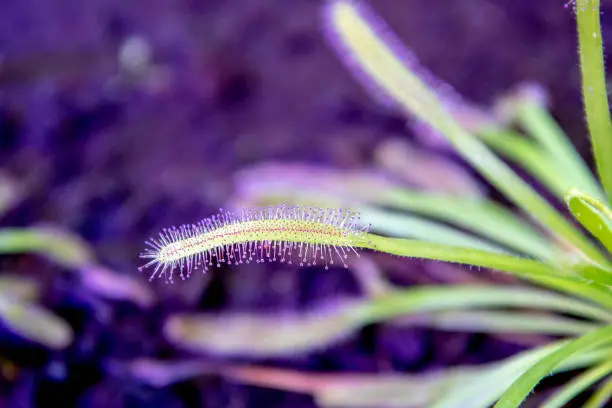
This reverse move is quite varied to the previous. Firstly, some 'Albino' vegetation might also be found. Generally, the non-albino specimens are a good deal much less vigorous, extra pink with shorter and slimmer petioles however wider and paddle-like leaf blades specifically when young. Although they are darker and have wider leaf blades, they are much less awesome in measurement and growth. The manufacturing of this hybrid used to be additionally tougher to make due to the fact "Big Pink" looks to hostilities making seed, while donating pollen from "Big Pink" to "Wideleaf" does not appear to be an issue.
The broad leaf structure of Drosera Capensis will make an fantastic addition to the carnivorous plant connoisseur series and as cape Drosera Capensiss are regarded a no-mess no-fuss plant, these come noticeably endorsed for novice carnivorous plant fans too.
Whether you choose beginning off with a youthful plant and watch it develop into full majestic glory over the years or leaping in with extra munch, proper from the get go, we have acquired you covered! Cultivo is all about picks and our vegetation are reachable in a number sizes and choices to go well with your each need. These are medium to near-flowering dimension plants, offered both bareroot or already potted in our deluxe carnivorous plant soil to take the problem out of repotting. Simply unwrap, water and enjoy your Drosera capensis!
Drosera Capensis Quick InfoDrosera Capensis Care in DetailDrosera Capensis WateringDrosera Capensis SoilDrosera Capensis LightDrosera Capensis TemperatureDrosera Capensis HumidityDrosera Capensis FertilizerDrosera Capensis PruningDrosera Capensis RepottingDrosera Capensis Pest & Disease ControlDrosera Capensis PropagationDrosera Capensis Leaf PropagationDrosera Capensis Division PropagationDrosera Capensis Propagation in WaterDrosera Capensis VarietiesDrosera Capensis Care FAQsDrosera capensis huge pinkDrosera capensis extensive leaf
Drosera Capensis Quick Info
| Botanical/Scientific Name | Drosera capensis |
| Common Name | Cape Sundew |
| Varieties | Typical, Wide-leaved, Narrow-leaved and Red forms |
| Uses | Used externally for warts, corns and sunburn |
| Origin | Cape in South Africa |
| Light Care | Provide partial sunlight |
| Soil Care | Sandy peat moss soil mix |
| Temperature Care | Between 55°-80°F |
| Humidity Care | 50% humidity or higher |
| Watering | To determine when it needs to be watered |
| Pruning Care | It isn't necessary to prune your cape sundew |
| Fertilizer Care | Don't need (or want) regular houseplant fertilizer |
| Propagation | To take a leaf cutting, cut a whole leaf, or portion of a leaf from the sundew you want to propagate |
| Toxic | It shouldn't be toxic to pets |
Drosera Capensis Care in Detail

Drosera Capensis Watering
The watering necessities of a cape Drosera Capensis are comparable to these of different Drosera Capensis. The soil need to be stored evenly moist; however, it have to now not be soaked. To decide when it wants to be watered, experience the soil. If the first inch or so of the soil feels dry, the Drosera Capensis wishes to be watered.An vital note: keep away from the use of faucet water, as it can comprise salts and chlorine that ought to be dangerous to the Drosera Capensis; instead, use rainwater, purified water, or distilled water.
We ought to water it commonly each and every two days. A top advice would be to water to hire the water tray method, put the pot on a tray with approximately 2.5 centimeters ( 1 inch) of water to take in the water it needs.
Drosera Capensis Soil
Never pot them into everyday potting soil as the vitamins and fertilizers will kill them over time. Tuberous Drosera Capensiss and most different Australian species select a sandier mix. Drosera regia, adelae, schizandra, and prolifera do exceptional in lengthy fibered sphagnum moss.Most Drosera Capensiss thrive in a typical soil for Drosera Capensis – moist soil that is negative in vitamins (often loos and fens). That is the purpose why they seize and feed on insects' juices to compensate for negative soil. But some Drosera Capensiss that stay in abandoned areas can continue to exist the warmth with the aid of solely developing with the rain.
Drosera Capensis Light
Drosera Capensis in the wild frequently develop beneath full sun. There are exceptions, of course, however simply the vegetation that a novice is possibly to have, such as Venus flytraps, Drosera Capensiss like Drosera capensis, and pitcher vegetation like Sarracenia, all like full sun.If you have a brightly lit greenhouse barring a good deal whitewash on it, you have to be fantastic if you can grant 10-16 hours of sunlight. If you are fortunate adequate to stay in a local weather the place you can develop your Drosera Capensis outdoors, 10-16 hours of direct, unfiltered daylight is your prescription, too.
But what about the indoor grower? This poses a foremost challenge. It is not likely that you will have a room that receives sufficient vivid sunlight, so you will want to grant synthetic lighting. And you ought to furnish a lot of it! Light filtering thru a window is now not enough, except perhaps we're speakme about an atrium which is so vibrant you blink for a few minutes each time you enter it.

Drosera Capensis Temperature
Give your Drosera Capensis subtropical stipulations (as they are from subtropical regions) and preserve inside a temperature vary of roughly 40-95 stages F. However do no longer maintain altering the role and region or the temperature of the Drosera Capensis it is possibly the plant will no longer develop as properly as regular and can also die. Also, as a carnivorous plant the Drosera Capensis can go into dormancy, Drosera Capensis does NOT require dormancy if the plant can be grown all yr spherical in subtropical conditions. If you can't then it is in all likelihood fantastic to put your plant into dormancy, simply recognize this as soon as you have a pleasant healthful Drosera Capensis it is challenging to completely kill your plant. The pleasant temperatures for a Drosera Capensis to go via dormancy in are roughly 35-38 ranges F then as soon as spring comes round the temperatures must heat up to round forty levels F. If these are roughly the prerequisites your Drosera Capensis is given then in the spring/summer you have to have a fantastic healthful Drosera Capensis coming again to full developing life.Drosera Capensis Humidity
Humidity is regarded to grant "superficial dew" that will disappear if the plant is eliminated from its humid environment. Humidity is necessary due to the fact it decreases transpiration/ water loss, permitting dew droplets to be larger. While humidity is no longer as vital if there is no air movement, humidity can be very advisable in greater temperatures, vibrant sunlight, or when there is a lot of wind. Humidity can be extended via the usage of a small humidifier or the tray technique (which is what I use).Light is perhaps the single most vital component in dew production. If a Drosera Capensis does now not get hold of adequate light, it will show up definitely inexperienced and the tentacles will now not have crimson coloration (normally the tentacles will flip crimson or pink in shiny light). The dew all through this time will commonly solely be produced in excessive humidity, and will be in the main water (without the sticky substance). If given greater sunlight, Drosera Capensiss have the strength they want to produce a thicker mucilage that is greater succesful of protecting onto insects, and will now not totally evaporate in low humidity
Drosera Capensis Fertilizer
Betta fish meals in flake shape is the 2nd best technique of feeding your Drosera Capensis. Just pinch some flakes between your fingers and sprinkle Drosera Capensis onto a leaf or two.Betta fish pellets are a bit greater of a process. Because they're greater dense than flakes, Drosera Capensis's mucilage can also now not spoil it all down and digest it. Lots of human beings combine pellets with water to destroy them down and make a gentle paste. Take a glob of this paste with a toothpick or your device of choice, and smear it onto a Drosera Capensis leaf.
Some growers who preserve live insect meals for reptiles additionally feed their Drosera Capensis with these. I do not advise shopping for stay bugs simply for feeding plants. You'll get way too many bugs and feed your vegetation so infrequently, most of them will in all likelihood die and turn out to be a nasty, pungent mess earlier than you can use all of them as food.
Drosera Capensis will devour if truth be told some thing that will stick to them except getting away. Essentially, if it will stick to Drosera Capensis, the Drosera Capensis can consume it. Generally speaking, you do not have to fear about the measurement of their meals as much.

Drosera Capensis Pruning
If you figure out you favor to prune your Drosera Capensis leaves, the method is pretty simple. If you pick to prune Drosera Capensis leaves, you can reduce off useless leaves with a pair of scissors. However, you do not want to cast off the leaves from your cape Drosera Capensis plant until you comprehend your plant is having troubles with pests.If you want to transplant your cape Drosera Capensis into a new container, you will want to buy a container that is large than what the plant had previously, principally if your plant has grown. If you do not choose to purchase a new container, you can usually disinfect the ancient container and use it again. However, solely re-use an historic container if the container is in true condition, and your cape Drosera Capensis plant hasn't grown much.
You may not want to trim leaves on your cape Drosera Capensis often, if at all. You additionally might not want to re-pot your plant very frequently except you are dealing with pests. Typically, re-potting your cape Drosera Capensis as soon as each and every three to 4 years ought to do the trick. It's additionally high-quality to transplant your cape Drosera Capensis when the plant is dormant so you might not journey as tons stress.
If you are dealing with pests and it is inflicting you to re-pot your flowers often, you may want to seem to be deeper into the problem. You do not favor to re-pot your cape Drosera Capensis too regularly due to the fact of the stress it motives on the plant. So, make positive you are re-potting solely when essential every time you journey pests or as soon as each and every three to 4 years.
Drosera Capensis Repotting
Before you begin splitting and repotting your Drosera Capensis, you may want to make certain that it clearly outgrew its pot. Splitting and repotting must now not be carried out except it is indispensable due to the fact it can put some stress on the plant, and there is a small hazard that the plant will be harmed in the process.Repotting a Drosera Capensis can be loads of fun, however there are a few matters to think about when doing so. If you discover your self struggling to correctly repot your Drosera Capensis, do now not supply up. Simply observe our recommendations for how to repot your Drosera Capensis, and you will be on your way to giving your Drosera Capensis a healthful developing environment.
Selecting the proper pot for your Drosera Capensis is very important. You do not prefer some thing too small, or you will discover your self repotting Drosera Capensis each six months, which isn't always correct for you or your plant.
A proper rule of thumb when repotting is to use a pot that is about two inches large than the modern-day or preceding pot. The pot must be at least 4-6 inches deep, relying on whether or not your range of Drosera Capensis has lengthy or brief roots.
Ideally, you need to keep away from clay pots when repotting your Drosera Capensis as they can put vitamins into the soil of the Drosera Capensis that can truly kill your Drosera Capensis eventually.

Drosera Capensis Pest & Disease Control
Aphids (Greenfly)
Can do a lot of injury and reason distortion, mainly in early spring. On giant flowers like Sarracenias, it is viable to wipe them off the new leaves with a finger. With small plant life like Venus Fly Trap and Drosera Capensiss, the aphids can over iciness in the plant and do a lot of injury earlier than the leaves come up.Sometimes you can't see any insects, however may additionally have tiny white sheddings of their skins, and a ailing searching plant. This will be aphids. A systemic insecticide is the first-class way to deal with them, or submerge the complete plant for a couple of days. Soft cleaning soap in every other natural approach of dealing with them.
We do have a native parasitic wasp, which we motivate in our polytunnels -it is regularly discovered on stinging nettles. Look for a parisitised aphid, which will seem to be like a light brown scale, It will hatch into a wasp. However, it is fine saved away from Butterworts and Drosera Capensiss, as they will trap them.
Botrytis
This is the fluffy gray mildew comparable to the one you get on mouldy strawberries. It tends to starton lifeless growth, so excellent husbandry is a way to forestall it. Botrytis is some thing to watch for mainly in spring and autumn on Sarracenias and Venus Fly Traps. Some species and hybrids are extra inclined to it than others. Remove lifeless foliage regularly, grant masses of air motion round the plant, specifically in still, damp climate in March, April as the plant life come lower back into growth. Spray with a fungicide if necessary. If botrytis is found, reduce out contaminated region with a sharp knife and dispose of all contaminated plant waste. Remove petals from historical flowers. They can fall into the crown of the plant and purpose botrytis.Mealy Bug
Mealy trojan horse are determined deep in the leaf axils or tucked on leaf ribs. They are a small white fluffy mass with a faded red insect inside the wool. Very damaging, and will weaken the plant. Spray a systemic insecticide, or dab every insect with a paintbrush dipped in methylated spirits or alcohol. Not a big problem for Drosera capensis, however most probably determined on Darlingtonia, Sarracenia and Nepenthes.Slugs, Snails and Caterpillars
Not a massive problem, however simply one can create pretty a few holes in a Sarracenia. The little inexperienced caterpillars can be especially hard to see. Just hold looking a this is the first-class way to get rid of them. Slugs can from time to time be the prey of Drosera capensis ssp purpurea, so its no longer all bad.Scale insect
These are small brown blister like insects, round 1-2 mm long, frequently located with sooty mildew developing on the honeydew brought on via the scale. We locate Sarracenia psittacina to be susceptible. Spray a systemic insecticide, or dab every insect with a paintbrush dipped in methylated spirits or alcohol.Drosera Capensis Propagation

Drosera Capensis Leaf Propagation
Some species of Drosera are so handy to propagate with the aid of leaf cuttings you can not assist by accident doing them. Occasionally you can locate a pot with a damaged leaf sprouting dozens of tiny plants. Occasionally. Not all species are what may want to be referred to as handy and a lot of matters can go wrong. But for most Drosera species, leaf cuttings are an convenient and speedy way to propagate plants.Why do leaf cuttings as a substitute of propagating flora from seed? Drosera capensis leaf cuttings will produce genuine clones of the mum or dad plant. There is a lot of genetic version that receives expressed in seedlings. You usually want to begin many extra vegetation than you choose from seed to guarantee you get a few that are energetic in your developing conditions. Leaf cuttings might also be your solely choice if you prefer an genuine reproduction of the prize plant that is already performing nicely for you or you desire to propagate a sterile hybrid or a plant that in any other case may not produce seed. As a bonus, leaf cuttings have a tendency to produce mature vegetation faster than from seed.
Not all Drosera species propagate comfortably from leaf cuttings. Drosera capensis leaf cuttings are mainly difficult. For this species and many others with thick ropey roots, root cuttings can work well.
It is impractical to make leaf cuttings of pigmy and tuberous Drosera due to the fact the leaves are skinny and have a tendency no longer to make sprouts. The pigmies are typically propagated from the gemmae they produce seasonally. The tuberous species are excellent completed via seed or sterile culture.
The Drosera petiolaris team species sprout new plant life from the base of the leaf the place it attaches to the stem. You want to pull off the Drosera capensis leaf taking the stipule with it. When you do this you are taking a danger of unfavorable your plant. But of these species this is the solely way to do it and even making ideal pullings is no assurance of getting new plants.
Drosera Capensis Division Propagation
It's pleasant to take root cuttings toward the give up of a dormancy period, or early in the developing season – specially if you are already going to be transplanting your Drosera Capensiss. Start with the aid of freeing your plant from its soil. Identify healthful roots that will appear black with white tips. Separate out a few of these roots, leaving lots in the back of for the dad or mum plant, and use a knife or sharp pruning shears to reduce two inch sections of root.Place the root cuttings horizontally on the plant's desired soil mix, and cowl with 1/4 – half of inch of soil. It's fantastic to plant them in a propagation tray with a humidity dome, or use any other potential of retaining prerequisites humid and warm.
Even although the roots do not have leaves to photosynthesize yet, it is necessary to expose Drosera capensis to bright, oblique light, so region them beneath develop lights, in a sunny window, or outdoors. Make positive that the propagation tray stays out of direct sun, or you threat overheating and cooking your root cuttings.
Be patient, preserve the soil moist, and inside a few weeks, you may begin to observe wee plantlets sprouting from the soil. After a few leaves have emerged, take away the humidity dome from the seed trays, and region the flora in direct light. Give the Drosera capensis root structures a few months to set up themselves, and you can replant your Drosera into a greater everlasting home.

Drosera Capensis Propagation in Water
It was once now not the excellent concept to use zip-lock baggage and I had to throw away a couple of them, earlier than they virtually started out developing small plants. I did no longer smooth the Drosera capensis leaves and there have been additionally some stays of captured bugs that made the water cloudy and possibly even brought on some of the leaves to rot.In a bit much less than two months, small flora emerged from leaf cuttings. First, Drosera capensis pushed out a couple of carnivorous leaves, and in a couple of weeks, first roots observed as well. By the use of saved power from the mom plant's leaf, they have a tendency to develop a whole lot quicker than vegetation propagated from seeds, which capability propagation of Drosera by using cuttings is way quicker and greater efficient, at least for Drosera capensis.
Drosera Capensis Varieties
Some species of Drosera have pollen self-incompatibility. In species with pollen self-incompatibility (SI), pollen from any given plant is now not in a position to fertilize its very own ovules or these of different men and women that have the identical SI genotype due to the fact the pollen dies or is killed in the style. This machine promotes outcrossing. If you desire to acquire seeds from a species with self-incompatibility you want two unrelated clones and you want to generally hand pollinate the vegetation transferring pollen from the stamens in the vegetation of one plant to the stigmas in the flower of the different plant. Or in species like Drosera binata, you can pollinate SI sorts with pollen from non-SI varieties.Generally plant life with self-incompatibility open their plants more than one days. Please see the web page on Drosera capensis pollen self-incompatibility for extra facts and a species list.
Some species of Drosera are dichogamous. That is inside any given flower the stigmas are receptive at a exceptional time from when the pollen is matured and released. These plants are normally open for two days with the stigmas being receptive one day and the stamens releasing pollen on the different day. The order that pollen matures and the stigmas being receptive can manifest in both order.
Generally to produce hybrids the fine technique requires getting rid of the stamens in a flower earlier than they mature in species that are succesful of self pollination. Failure to do this can end result in few if any hybrids. This can be intricate due to the fact Drosera species that generally self-pollinate can also open their flora for solely a few hours. However if the vegetation naturally self-pollinate they do it as the flower closes.
Drosera capensis are commonly very small. To make crosses I locate it best to use a pair of small forceps to pluck stamens from one flower and then paint the pollen from the anther onto the stigmas of some other flower. If you get any seeds it is high-quality to plant them immediately. However with temperate and different species with a robust seasonal existence cycle it is exceptional to plant the seeds at the suitable time so any hybrids do no longer die making an attempt to go dormant prematurely.

Drosera Capensis Care FAQs
Drosera capensis huge pink
This specific range of Drosera capensis is recognised for its red coloration when uncovered to excessive depth mild and for developing a great deal larger than the common Cape Drosera Capensis, consequently the title 'Big Pink'. It is effortless to care for and may additionally produce plantlets as it grows. The leaves are included with tentacles (trichomes) that secrete a sticky "dew" to appeal to and trap prey.This reverse move is quite varied to the previous. Firstly, some 'Albino' vegetation might also be found. Generally, the non-albino specimens are a good deal much less vigorous, extra pink with shorter and slimmer petioles however wider and paddle-like leaf blades specifically when young. Although they are darker and have wider leaf blades, they are much less awesome in measurement and growth. The manufacturing of this hybrid used to be additionally tougher to make due to the fact "Big Pink" looks to hostilities making seed, while donating pollen from "Big Pink" to "Wideleaf" does not appear to be an issue.
Drosera capensis extensive leaf
Drosera capensis 'Wide Leaf' is accurately named for the wider leaves it produces in assessment to the traditional structure of the plant. It is a hardy grower and will boost a "trunk" over time as ancient leaves die away and new ones are produced from the boom point. The leaves are blanketed with tentacles that secrete a clear sticky substance to entice and capture prey.The broad leaf structure of Drosera Capensis will make an fantastic addition to the carnivorous plant connoisseur series and as cape Drosera Capensiss are regarded a no-mess no-fuss plant, these come noticeably endorsed for novice carnivorous plant fans too.
Whether you choose beginning off with a youthful plant and watch it develop into full majestic glory over the years or leaping in with extra munch, proper from the get go, we have acquired you covered! Cultivo is all about picks and our vegetation are reachable in a number sizes and choices to go well with your each need. These are medium to near-flowering dimension plants, offered both bareroot or already potted in our deluxe carnivorous plant soil to take the problem out of repotting. Simply unwrap, water and enjoy your Drosera capensis!
Latest Updated
- Benefits of Bugleweed - 7 Science-backed Health Benefits
- Bugleweed Dangers & Side Effects - Is It Poisonous?
- How to Plant Evergreen Trees - What You Should Know
- When to Plant Evergreens - Grow Guide for Evergreen Trees
- 12 Wonderful Evergreen Shrubs for Your Garden
- 12 Popular Evergreen Plants with Pictures for Beginners
- When And How To Prune A Lilac Bush Like a Pro
- How to Grow & Care for Lilac Vine (Hardenbergia Violacea)
- Japanese Lilac Tree (Syringa Reticulata) Care & Propagation Guide
- Shumard Oak Pros and Cons - What to Know
Popular Articles
- Winter maintenance of Antirrhinum Majus
- How to Grow Terminalia Mantaly Tree
- How to Grow and Care for Crossostephium Chinense
- How to grow Antirrhinum Majus in spring
- Peristeria Elata (Dove Orchid) Profile: Info & Care Guide
- Underwatered Snake Plant (Sansevieria Trifasciata) - Signs And How To Fix
- How to Care for Brazilian Jasmine Plant (Mandevilla Sanderi)
- How to Grow & Care for Graptopetalum Purple Delight in Summer
- Rosa Chinensis (China Rose): Plant Growing & Care Tips
- How to Care for Baby Sun Rose (Aptenia Cordifolia)